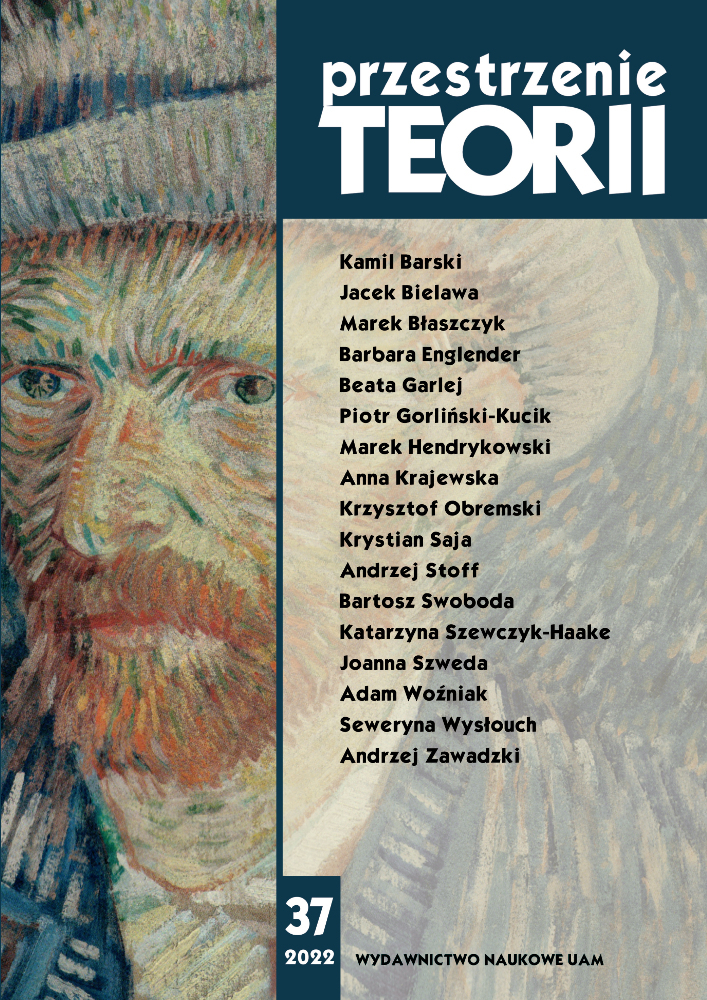Abstrakt
Józef Tischner’s Myślenie z wnętrza metafory [Thinking From Within the Metaphor] and Bartłomiej Maliszewski’s Metafora i aksjologia [Metaphor and Axiology] are texts that are both described (analysed) and interpreted here. However, the debatability of the dual understanding of metaphor (‘inside’ – ‘outside’) is only a preliminary difficulty. For it will be incomparably more important that when we read Thinking From Within the Metaphor, then we will not find an explanation of the authorial meaning attributed to the after all key term of his text, and this is by no means a coincidence. The fundamental opposition – unambiguous genre language versus axiological and agathological analogical (metaphorical, symbolic) language – is certainly a persuasive construction, but not necessarily a valid one. A fundamental literary problem: is the Platonic cave really a metaphor? In Bartłomiej Maliszewski’s book Metafora i aksjologia wzorzec człowieka w renesansowej literaturze parenetycznej [Metaphor and Axiology. The Model of Man in Renaissance Parenetic Literature], ‘metaphor’ is equated with the ‘figurative’. There would be nothing reprehensible in this if not for the fact that these two key terms in the book co-create a state of approximate numerical equilibrium, while (and this is more important) proving to be both identical and disjointed. The lack of a definition of ‘metaphor’ and ‘figurative’ makes the whole impressive argument resemble a colossus standing on two legs of clay, over which it stumbles as they become entangled. The legitimacy of the combined view of Thinking From Within the Metaphor and Metaphor and Axiology is contained primarily in the fact that Renaissance parenesis can be seen as one of the historical forms of agathology.
Bibliografia
Balcerzan E., Metafora a interpretacja, „Teksty” 1980, nr 6, s. 40–41.
Gałkowski S., Granica filozofii. Metafora w filozofii na przykładzie języka Józefa Tischnera, [w:] Filozofia w literaturze. Literatura w filozofii, red. A. Iskra-Paczkowska, S. Gałkowski, M. Stanisz, Rzeszów 2013.
Grzędzielska M., Małe i wielkie metafory, „Pamiętnik Literacki” 1971, z. 4.
Maliszewski B., Metafora i aksjologia wzorzec człowieka w renesansowej literaturze parenetycznej, Lublin 2009.
Tischner J., Myślenie z wnętrza metafory, [w:] tegoż, Myślenie według wartości, Kraków 1982.
Licencja

Utwór dostępny jest na licencji Creative Commons Uznanie autorstwa – Użycie niekomercyjne – Bez utworów zależnych 4.0 Międzynarodowe.
Autorzy
Autorzy tekstów przyjętych do publikacji w czasopiśmie „Przestrzeniach Teorii” są zobowiązani do wypełnienia, podpisania i odesłania na adres redakcji umowy o udzielenie nieodpłatnej licencji do utworów, z zobowiązaniem do udzielania sublicencji CC.
Zgodnie z umową, autorzy tekstów opublikowanych w czasopiśmie „Przestrzeniach Teorii” udzielają Uniwersytetowi im. Adama Mickiewicza w Poznaniu niewyłącznej i nieodpłatnej licencji oraz zezwalą na użycie sublicencji Creative Commons Attribution-NonCommercial-NoDerivatives 4.0 International (CC BY-NC-ND 4.0).
Autorzy zachowują prawa do dalszego, swobodnego rozporządzania utworem.
Autorzy, którzy wykorzystują w swoim tekście cudze utwory (np. ilustracje, fotografie) proszeni są o dostarczenie do redakcji czasopisma zgodę na publikację od uprawnionych podmiotów.
Użytkownicy
Zainteresowani użytkownicy internetu uprawnieni są do korzystania z utworów opublikowanych po 2015 roku „Przestrzeniach Teorii” tylko w calach niekomercyjnych, pod następującymi warunkami:
- uznanie autorstwa - obowiązek podania wraz z rozpowszechnionym utworem, informacji, o autorstwie, tytule, źródle (odnośniki do oryginalnego utworu, DOI) oraz samej licencji;
- bez tworzenia utworów zależnych - utwór musi być zachowany w oryginalnej postaci, nie można bez zgody twórcy rozpowszechniać np. tłumaczeń, opracowań.
Do wszystkich tekstów opublikowanych przed 2015 r. prawa autorskie są zastrzeżone.
Inne
Uniwersytet im. Adama Mickiewicza w Poznaniu zachowuje prawo do czasopisma jako całości (układ, forma graficzna, tytuł, projekt okładki, logo itp.).

